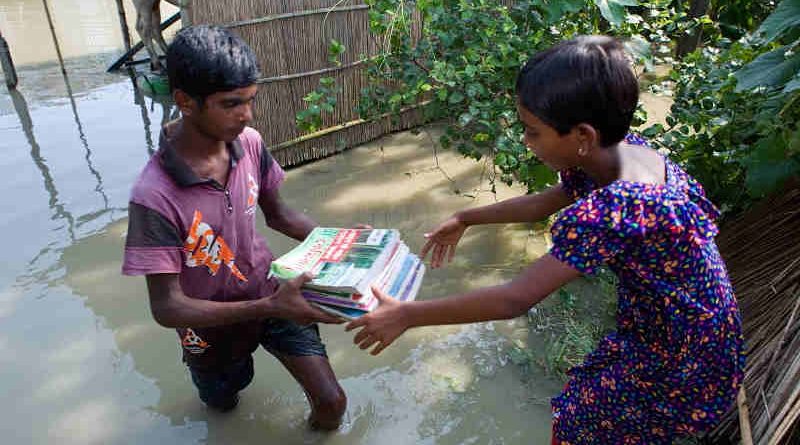Monsoon Rains Affecting Over Five Million Children

Heavy rainfall, flooding and landslides across three countries in South Asia – Nepal, India, and Bangladesh – have killed at least 93 children, and put the lives of millions more at risk. UNICEF estimates that more than 12 million people, including about five million children, have been affected.
“Millions of children have seen their lives turned upside down by the torrential rainfall, flooding, and landslides,” said Jean Gough, UNICEF Regional Director for South Asia. “As the rains continue, these numbers are only likely to grow. UNICEF is responding urgently, working with local authorities and partners to ensure children are kept safe, and provide the support needed,” she added.
Whilst many areas remain inaccessible due to damage to roads, bridges, and railways, the most urgent needs for children are clean water, hygiene supplies to prevent the spread of disease, food supplies, and safe places in evacuation centres for children to play.
UNICEF is on the ground working in close coordination with respective governments and humanitarian partners from the three countries to scale up its responses and respond to the immediate needs of affected children and their families.
While individual extreme weather events cannot specifically be attributed to climate change, the increasing frequency and severity of extreme weather – including recent high temperatures, intense rains, and slow-moving weather fronts – are in line with predictions of how human activities are affecting the global climate.
Such events can cause death and devastation and can also contribute to the increased spread of major killers of children, such as malnutrition, malaria, and diarrhoea. And as these extreme climate events increase in frequency and magnitude, the risks to children will likely outpace global capacity to mitigate them as well as to provide humanitarian response.




